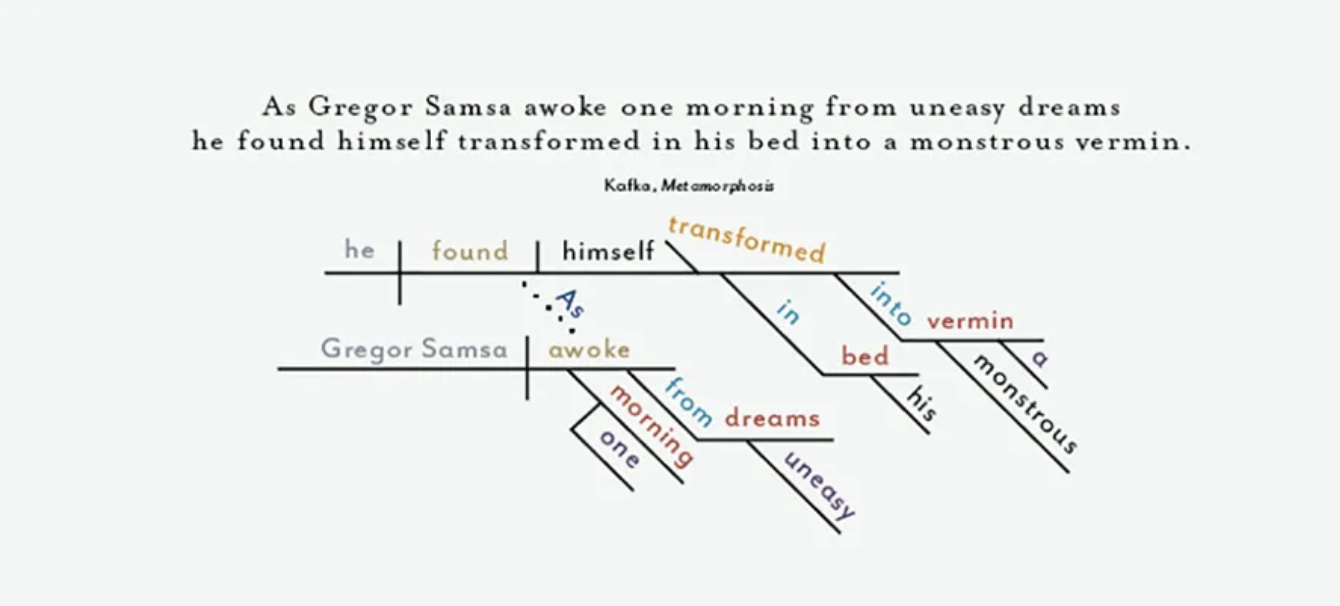Comments
- No comments found

Sentence diagramming, an old technique from the 19th century, can be applied to modern AI-driven communication, specifically in crafting GPT prompts.
Sentence diagramming involves breaking down a sentence into its components and analyzing their relationships. When applied to GPT prompts, it helps optimize communication with the model. By dissecting the subject, verb, and adjectives/adverbs in a prompt, one can guide the AI’s response in different directions, change the expected type of response, and provide more specific guidance. Sentence diagramming can also be scaled to paragraph-length prompts, creating narrative structures that the model can interpret and extend. By understanding the role of each sentence component, prompt engineering can be optimized to bridge the gap between the desired story and the output generated by GPT.
There’s an old adage that says, “what’s old becomes new again.” In the realm of language and communication, this phrase rings true. Take sentence diagramming, for example — a method with roots back in the 19th century, but one that could prove invaluable in the world of modern AI-driven communication.

A sentence diagram of the opening sentence from Franz Kafka’s Metamorphosis
Sentence diagramming is a visual tool used to map the grammatical structure of a sentence. Originally developed by S. W. Clark in 1847, it involves breaking down a sentence into its basic components — subject, verb, object, etc. — and arranging them on a chart that shows how these parts interrelate. This process helps to clarify syntax, improve language comprehension, and highlight nuanced meaning in phrases.
GPT is a modern AI language model that still, in some ways, follows aligns with human speech. It generates human-like text by predicting the next word in a sentence, given a prompt, or initial set of words. While its output can be impressively coherent, there is an art to creating prompts that guide GPT towards producing the desired text.
In this context, sentence diagramming becomes a modern tool for understanding and crafting GPT prompts. By treating prompts as sentences to be diagrammed, we can dissect their components, assess the impact of word choice and sequence, and make informed decisions that optimize communication with the model.
Let’s go back to elementary school and take a lesson. Specific sentence elements — verbs, subjects, and adjectives — can be dissected and optimized for better GPT prompt creation. And breaking down a prompt to its key components can provide a powerful guide that ensures each component of the prompt comes together as a single, yet sophisticated driver for the LLM.
The subject of a sentence is the “who” or “what” that is doing or being something. In a GPT prompt, the subject often sets the scene or topic and generally references GPT as the subject itself. It also provides critical context for the development of the prompt. Changing the subject can steer the AI’s response in different directions. For instance:
“Write (You) a blog post about recent advances in AI.”
“You are a university professor of engineering, write a blog post about recent advances in AI.”
Though the action (‘Write a blog post’) remains constant, changing the redefining the subject ‘you’ redirects the AI’s focus and allows it to create from the position and opinion of a subject with a unique authority or point of view.
Verbs are the engine of a sentence, driving the action and indicating what the subject is doing. In a GPT prompt, the verb can significantly influence the model’s response. For example, consider these two prompts:
“Describe the weather today.”
“Craft a story about the weather today.”
In sentence diagramming, both prompts have the same structure: a command verb (describe/craft) followed by a direct object (the weather today). However, the chosen verb drastically shifts the type of response expected. “Describe” might result in a present tense observation, while ‘craft’ might lead to more descriptive or even prosaic response.
Adjectives and adverbs describe or modify nouns and verbs, adding detail and depth. In a GPT prompt, adjectives can sharpen the focus of the model’s response. For example:
“Generate a list of healthy meals.”
“Generate a list of delicious health meals.”
“Generate a list of mouth-watering, savory healthy meals.”
In both prompts, “Generate a list” is the command and “meals” is the object, but the adjectives are key in guiding the AI towards a more specific output.
The strength of sentence diagramming for a prompt doesn’t stop at individual sentences — it can be scaled to accommodate longer, paragraph-length prompts. By treating the entire paragraph as an interconnected structure, rather than an assemblage of isolated sentences, we can construct powerful, comprehensive prompts that guide GPT more effectively.
The prompt paragraph, in essence, becomes a narrative microcosm, encompassing key structural elements that, when diagrammed, reveal a larger story at play. For instance, the opening sentence might establish a central problem or insight. Subsequent sentences can flesh out the background setting, introduce key facts and drivers a, or frame the overarching context.
Notably, the narrative can present the idea of “psychic permission” that suggests an invitation for the AI to explore beyond its regular boundaries. The phrase “every decision matters” implicitly urges the model to generate high-stakes, suspenseful scenarios. It’s like a tacit nod, signaling the model to push the bounds of its programming and innovate within the narrative constraints provided.
Through this approach, prompt paragraphs become more than just instructions — they become scaffolds, upon which GPT can construct intricate, nuanced narratives. And in the process, the age-old practice of sentence diagramming finds renewed relevance, empowering us to communicate with AI in more profound and effective ways. They create a kind of narrative or storyline that the model can latch onto, interpret, and extend, thereby leading to a richer, more engaging output. It’s akin to setting the stage and characters for a play — providing a context-rich environment for the AI to generate subsequent text.
The principles of structure and function, universal across disciplines from grammar to physiology, underscore the interconnectedness of all parts within a system. In language, the structure of sentences, paragraphs, and narratives drives their function, shaping how messages are conveyed and understood. Similarly, in biology, the structure of an organ or organism determines its function, dictating its role within the larger ecosystem.
Much like sentence diagramming helps illuminate the inner workings of complex sentences, examining the structure of our prompts — the choice and arrangement of verbs, nouns, adjectives and their interrelations — can significantly optimize their function. By deconstructing and thoughtfully reconstructing our prompts, we can facilitate more effective communication with the model, guiding it towards desired outputs with greater precision.
By applying old school techniques like sentence diagramming to new school challenges like prompt creation, we not only enhance our interaction with AI but also celebrate the enduring relevance of foundational principles across time and technology.
John is the #1 global influencer in digital health and generally regarded as one of the top global strategic and creative thinkers in this important and expanding area. He is also one the most popular speakers around the globe presenting his vibrant and insightful perspective on the future of health innovation. His focus is on guiding companies, NGOs, and governments through the dynamics of exponential change in the health / tech marketplaces. He is also a member of the Google Health Advisory Board, pens HEALTH CRITICAL for Forbes--a top global blog on health & technology and THE DIGITAL SELF for Psychology Today—a leading blog focused on the digital transformation of humanity. He is also on the faculty of Exponential Medicine. John has an established reputation as a vocal advocate for strategic thinking and creativity. He has built his career on the “science of advertising,” a process where strategy and creativity work together for superior marketing. He has also been recognized for his ability to translate difficult medical and scientific concepts into material that can be more easily communicated to consumers, clinicians and scientists. Additionally, John has distinguished himself as a scientific thinker. Earlier in his career, John was a research associate at Harvard Medical School and has co-authored several papers with global thought-leaders in the field of cardiovascular physiology with a focus on acute myocardial infarction, ventricular arrhythmias and sudden cardiac death.
Leave your comments
Post comment as a guest